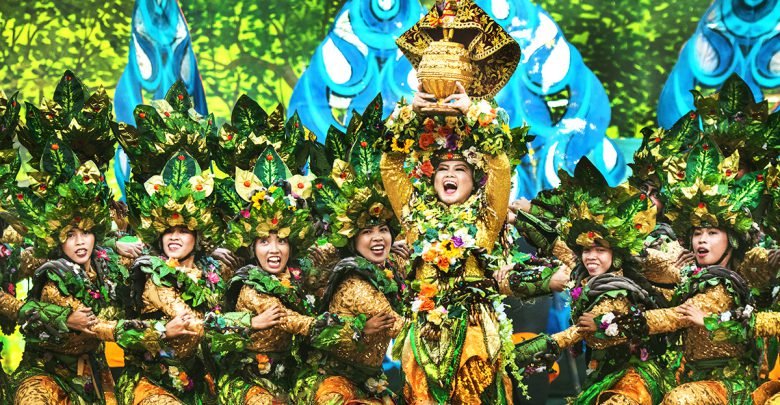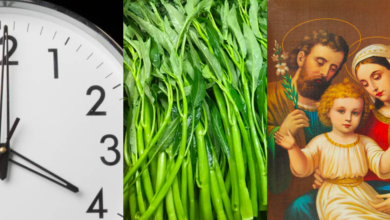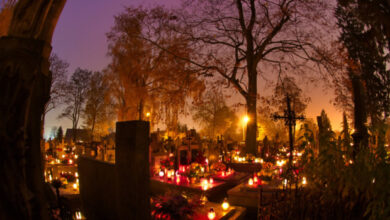
Why the Philippines is the Fiesta Capital of the World
In the Philippines, there is a fiesta for every saint and every story. These festivals take place across the country all year round – each one a unique celebration of faith, culture, nationalism, and other values that we Filipinos hold dear in our hearts.
With most of us being deeply religious, many of our festivals originated as a way to honor the patron saint of a town or province. Locals typically organize novenas, processions, and masses to show their devotion to their patron saint. Meanwhile, activities such as beauty pageants and parades are created for the community to have fun and feel more festive.
Amidst the merrymaking, the spirit of community is easily highlighted. The joy of sharing good food with family and neighbors, the eagerness to get a glimpse of the procession and be part of the celebration, the homecoming of balikbayans who return home and reminisce the old times — these are proof that the fiesta culture has become a big part of the lives of many Filipinos.
Before fiestas
Before the Spaniards reached Philippine shores, indigenous settlers practiced shamanism or the worship of spirits. These spirits are believed to have control over various parts of human life including family, health, wealth, and subsistence. So ever since, our people have been conducting ceremonies and ritual offerings to ward off misfortune, appease malevolent spirits, etc.
It was only when Catholic missionaries arrived alongside the Spanish explorers that fiestas were introduced to us. These festivities served as one of several tools to persuade the natives to convert to the Roman Catholic faith.
It was a successful tactic, as the Spanish clergy were able to effectively merge their teachings with indigenous ritual practices. And many of these traditions survive up to today.
The importance of festivals for Filipinos
Religion is one of the most significant aspects of Filipino life, and this significance transcends individual faith and shapes national identity, as we remain the only country in Asia that’s predominantly Christian.
For many Filipinos, fiestas are important because these occasions allow them to give proper thanks for the miraculous power of saints. It is a common belief among Catholics that saints are responsible for all the good fortune a person, family, or community receives.
This is precisely why many Philippine festivals are centered on expressing gratitude for good harvest. And compared to city folks, those in the provinces are more known for going all out during fiestas. They believe that spending for a grand celebration will give them an even bigger boon in the coming year.
Regardless of religion or regional culture, we should remember that fiestas are reminders of our heritage. They keep us rooted to our ancestry, and they bring families and communities together as we usher in future generations.
Most notable festivals across the Philippines
Feast of the Black Nazarene
Among the most notable festivals in the country is the Feast of the Black Nazarene in Quiapo, Manila. This is one of the largest and longest-standing traditions in the capital. It is known for the thousands of barefoot devotees who join the procession of the Black Nazarene on January 9 every year.
The Black Nazarene was carved from dark wood during the 16th century. The wooden sculpture, which depicts Jesus en route to his crucifixion, was made by an unknown Mexican and transported via galleon to the Philippines in 1606.
The original image failed to survive the bombardment and flames during the Liberation of Manila in 1945. However, a copy of the image was donated by the Augustinian Recollects in January 9, 1787 to the Church of the Camisa (one of Quiapo Church’s original names). This event was later on celebrated by devotees who believe in receiving blessings from the icon.
Sinulog Festival
Another popular festival is the Sinulog Festival in Cebu. Typically celebrated with a long parade, extravagant dances, and street parties, the feast is able to attract millions of local and foreign tourists every year.
It is held on the third Sunday of January in honor of Santo Niño. The word ‘Sinulog’ was derived from the Cebuano adverb ‘sulog’, which means “like water current movement.” Thus, the term also refers to the ritual prayer-dance that devotees dedicate to the Child Jesus.
Dinagyang Festival
In another part of the Visayas, a colorful festival called Dinagyang is also widely celebrated by locals and visitors. Dubbed the “Queen of All Philippine Festivals,” the feast is held to honor Santo Niño and celebrate the arrival of Malay settlers in Panay.
The Dinagyang Festival was patterned after Aklan’s Ati-Atihan Festival. Nevertheless, the feast became its own as it showed the cultural heritage of Iloilo. Through the years, the province continuously worked on making their celebration more festive and meaningful.
In fact, the Dinagyang Festival has received different kinds of recognition throughout the years because of its legacy and popularity. One of its most remarkable achievements is winning Best Tourism Event three times in a row in 2006, 2007, and 2008. Deemed as a world-class festival, it is one of the few festivals in the world that received support from the United Nations to promote the Millennium Development Goals.
Apart from these qualities, the Dinagyang Festival is able to stand out among other festivals in the country because of its various innovations. The feast introduced carousel performances, mobile risers, Dinagyang pipes, and their own mascot called Dagoy. These innovations have influenced how other towns and provinces run their own celebrations.




